#NNPA BlackPress
Reparations Must Include the Costs of Predatory Lending
NNPA NEWSWIRE — “Although in some respects racial equality has improved in the intervening years,” states the report, “in other respects today’s Black citizens remain sharply disadvantaged in the criminal justice system, as well as in neighborhood resources, employment, and education, in ways that seem barely distinguishable from those of 1968.”
New university studies track high costs of discriminatory housing
By Charlene Crowell, Communications Deputy Director with the Center for Responsible Lending
In recent years, the spate of homicides linked to questionable uses of deadly weapons and/or force, have prompted many activist organizations to call for racial reparations. From Trayvon Martin’s death in Florida, to Michael Brown’s in Missouri, Eric Garner’s in New York and many other deaths — a chorus of calls for reparations has mounted, even attracting interest among presidential candidates.
While no amount of money could ever compensate for the loss of Black lives to violent deaths, a growing body of research is delving into the underlying causes for high poverty, low academic performance and — lost wealth. Public policy institutes as well as university-based research from the University of California at Berkeley and Duke University are connecting America’s racial wealth gap to remaining discriminatory policies and predatory lending.
This unfortunate combination has plagued Black America over multiple decades. And a large part of that financial exploitation is due to more than 70 years of documented discriminatory housing.
The Road Not Taken: Housing and Criminal Justice 50 Years After the Kerner Commission Report, returns to the findings of the now-famous report commissioned by President Lyndon Johnson. In the summer of 1967, over 150 race-related riots occurred. After reviewing the 1968 report’s recommendations and comparing them to how few were ever enacted, the Haas Institute tracks the consequences of recommendations that were either ignored, diluted, or in a few cases pursued. Published by Berkeley’s Haas Institute for Fair and Inclusive Communities, it weaves connections between education, housing, criminal justice – or the lack thereof.
“Although in some respects racial equality has improved in the intervening years,” states the report, “in other respects today’s Black citizens remain sharply disadvantaged in the criminal justice system, as well as in neighborhood resources, employment, and education, in ways that seem barely distinguishable from those of 1968.”
In 1968, the Kerner Commission report found that in cities where riots occurred, nearly 40% of non-white residents lived in housing that was substandard, sometimes without full plumbing. Further, because Black families were not allowed to live wherever they could afford, financial exploitation occurred whether families were renting or buying a home.

As many banks and insurance companies redlined Black neighborhoods, access to federally-insured mortgages were extremely limited. At the same time, few banks loaned mortgages to Blacks either. This lack of access to credit created a ripe market for investors to sell or rent properties to Black families, usually in need of multiple needed repairs. Even so, the costs of these homes came at highly inflated prices.
In nearly all instances, home sales purchased “on contract” came with high down payments and higher interest rates than those in the general market. The result for many of these families was an eventual inability to make both the repairs and the high monthly cost of the contract. One late or missed payment led to evictions that again further drained dollars from consumers due to a lack of home equity. For the absentee owner, however, the property was free to sell again, as another round of predatory lending. As the exploitive costs continued, the only difference in a subsequent sale would be a home in even worse physical condition.
The Plunder of Black Wealth in Chicago: New Findings on the Lasting Toll of Predatory Housing Contracts, also published this May, substantiates recent calls for reparations, as it focuses on predatory housing contracts in Illinois’ largest city. Published by Duke University’s Samuel DuBois Cook Center on Social Equity, this report analyzed over 50,000 documents of contract home sales on the Windy City’s South and West Sides and found disturbing costs of discriminatory housing in one of the nation’s largest cities, as well as one of the largest Black population centers in the nation. Among its key findings:
- During the 1950s and 1960s, 75-95% of Black families bought homes on contract;
- These families paid an average contract price that was 84% more than the homes were worth;
- Consumers purchasing these homes paid an additional $587 each month above the home’s fair market value;
- Lost Black Chicago wealth, due to this predatory lending ranged between $3.2-$4 billion.
“The curse of contract sales still reverberates through Chicago’s Black neighborhoods (and their urban counterparts nationwide,” states the Duke report, “and helps explain the vast wealth divide between Blacks and Whites.”
Now fast forward to the additional $2.2 trillion of lost wealth associated with the spillover costs from the foreclosure crisis of 2007-2012. During these years, 12.5 million homes went into foreclosure. Black consumers were often targeted for high-cost, unsustainable mortgages even when they qualified for cheaper ones. With mortgage characteristics like prepayment penalties and low teaser interest rates that later ballooned to frequent and eventually unaffordable adjustable interest rates, a second and even worse housing financial exploitation occurred.
A 2013 policy brief by the Center for Responsible Lending, found that consumers of color – mostly Black and Latinx – lost half of that figure, $1.1 trillion in home equity during the foreclosure crisis. These monies include households who managed to keep their homes but lost value due to nearby foreclosures. Households who lost their homes to foreclosures also suffered from plummeting credit scores that made future credit more costly. And families who managed to hold on to their homes lost equity and became upside down on their mortgages – owing more than the property is worth. Both types of experiences were widespread in neighborhoods of color.
In terms of lost household wealth, nationally foreclosures took $23,150. But for families of color, the household loss was nearly double — $40,297.
CRL’s policy brief also states. “We do not include in our estimate the total loss in home equity that has resulted from the crisis (estimated at $7 trillion), the negative impact on local governments (in the form of lost tax revenue and increased costs of managing vacant and abandoned properties) or the non-financial spillover costs, such as increased crime, reduced school performance and neighborhood blight.”
As reparation proposals are discussed and debated, the sum of these financial tolls should rightly be a key part. While the Kerner Commission recommendations remain viable even in 2019, it will take an enormous display of public will for them to be embraced and put into action.
“The Kerner Report was the ‘road not taken’, but the road is still there,” noted John A. Powell, the Hass Institute’s Director.
Charlene Crowell is the Communications Deputy Director with the Center for Responsible Lending. She can be reached at charlene.crowell@responsiblelending.org.
#NNPA BlackPress
Beloved Actor and Activist Louis Cameron Gossett Jr. Dies at 87
NNPA NEWSWIRE — Louis Gossett Jr., the groundbreaking actor whose career spanned over five decades and who became the first Black actor to win an Academy Award as Best Supporting Actor for his memorable role in “An Officer and a Gentleman,” has died. Gossett, who was born on May 27, 1936, in Brooklyn, N.Y., was 87. Recognized early on for his resilience and nearly unmatched determination, Gossett arrived in Los Angeles in 1967 after a stint on Broadway.
The post Beloved Actor and Activist Louis Cameron Gossett Jr. Dies at 87 first appeared on BlackPressUSA.

By Stacy M. Brown
NNPA Newswire Senior National Correspondent
@StacyBrownMedia
Louis Gossett Jr., the groundbreaking actor whose career spanned over five decades and who became the first Black actor to win an Academy Award as Best Supporting Actor for his memorable role in “An Officer and a Gentleman,” has died. Gossett, who was born on May 27, 1936, in Brooklyn, N.Y., was 87. Recognized early on for his resilience and nearly unmatched determination, Gossett arrived in Los Angeles in 1967 after a stint on Broadway.
He sometimes spoke of being pulled over by law enforcement en route to Beverly Hills, once being handcuffed to a tree, which he remembered as a jarring introduction to the racial tensions of Hollywood. In his memoir “An Actor and a Gentleman,” Gossett recounted the ordeal, noting the challenges faced by Black artists in the industry. Despite the hurdles, Gossett’s talent shone brightly, earning him acclaim in groundbreaking productions such as “A Raisin in the Sun” alongside Sidney Poitier. His Emmy-winning portrayal of Fiddler in “Roots” solidified his status as a trailblazer, navigating a landscape fraught with racial prejudice.
According to the HistoryMakers, which interviewed him in 2005, Gossett’s journey into the limelight began during his formative years at PS 135 and Mark Twain Junior High School, where he demonstrated early leadership as the student body president. His passion for the arts blossomed when he starred in a “You Can’t Take It With You” production at Abraham Lincoln High School, catching the attention of talent scouts who propelled him onto Broadway’s stage in “Take A Giant Step.” His stellar performance earned him the prestigious Donaldson Award for Best Newcomer to Theatre in 1952. Though initially drawn to sports, Gossett’s towering 6’4” frame and athletic prowess led him to receive a basketball scholarship at New York University. Despite being drafted by the New York Knicks in 1958, Gossett pursued his love for acting, honing his craft at The Actors Studio under the tutelage of luminaries like John Sticks and Peggy Fury.
In 1961, Gossett’s talent caught the eye of Broadway directors, leading to roles in acclaimed productions such as “Raisin in the Sun” and “The Blacks,” alongside legends like James Earl Jones, Cicely Tyson, Roscoe Lee Brown, and Maya Angelou. Transitioning seamlessly to television, Gossett graced small screens with appearances in notable shows like “The Bush Baby” and “Companions in Nightmare.” Gossett’s silver screen breakthrough came with his role in “The Landlord,” paving the way for a prolific filmography that spanned over 50 movies and hundreds of television shows. From “Skin Game” to “Lackawanna Blues,” Gossett captivated audiences with his commanding presence and versatile performances.
However, his portrayal of “Fiddler” in Alex Haley’s groundbreaking miniseries “Roots” earned Gossett critical acclaim, including an Emmy Award. The HistoryMakers noted that his golden touch extended to the big screen, where his role as Sergeant Emil Foley in “An Officer and a Gentleman” earned him an Academy Award for Best Supporting Actor, making him a trailblazer in Hollywood history.
Beyond the glitz and glamour of Hollywood, Gossett was deeply committed to community activism. In 1964, he co-founded a theater group for troubled youth alongside James Earl Jones and Paul Sorvino, setting the stage for his lifelong dedication to mentoring and inspiring the next generation. Gossett’s tireless advocacy for racial equality culminated in the establishment of Eracism, a nonprofit organization dedicated to combating racism both domestically and abroad. Throughout his illustrious career, Gossett remained a beacon of strength and resilience, using his platform to uplift marginalized voices and champion social change. Gossett is survived by his children, Satie and Sharron.
The post Beloved Actor and Activist Louis Cameron Gossett Jr. Dies at 87 first appeared on BlackPressUSA.
#NNPA BlackPress
COMMENTARY: D.C. Crime Bill Fails to Address Root Causes of Violence and Incarceration
WASHINGTON INFORMER — The D.C. crime bill and so many others like it are reminiscent of the ‘94 crime bill, which produced new and harsher criminal sentences, helped deploy thousands of police and surveilling methods in Black and brown communities, and incentivized more states to build prisons through a massive infusion of federal funding. While it is not at the root of mass incarceration, it significantly accelerated it, forcing a generation of Black and brown families into a never-ending cycle of state-sanctioned violence and incarceration.
The post COMMENTARY: D.C. Crime Bill Fails to Address Root Causes of Violence and Incarceration first appeared on BlackPressUSA.

By Kaili Moss and Jillian Burford | Washington Informer
Mayor Bowser has signed the “Secure DC” omnibus bill passed by the D.C. Council last month. But we already know that this bill will be disastrous for all of D.C., especially for Black and brown residents.
While proponents claim that this legislation “will make D.C. residents safer and more secure,” it actually does nothing to address the root of the harm in the first place and instead maintains a cycle of violence, poverty, and broken community ties. The omnibus bill calls for increased surveillance, drug-free zones, and will expand pre-trial detention that will incarcerate people at a significantly higher rate and for an indeterminate amount of time before they are even tried. This bill will roll back decades of nationwide policy reform efforts and initiatives to keep our communities safe and whole, which is completely contradictory to what the “Secure” D.C. bill claims it will do.
What is unfolding in Washington, D.C., is part of a dangerous national trend. We have seen a resurrection of bad crime bills in several jurisdictions across the country — a phenomenon policy experts have named “zombie laws,” which are ineffective, costly, dangerous for communities of color and, most importantly, will not create public safety. Throwing more money into policing while failing to fund preventative measures does not keep us safe.
The D.C. crime bill and so many others like it are reminiscent of the ‘94 crime bill, which produced new and harsher criminal sentences, helped deploy thousands of police and surveilling methods in Black and brown communities, and incentivized more states to build prisons through a massive infusion of federal funding. While it is not at the root of mass incarceration, it significantly accelerated it, forcing a generation of Black and brown families into a never-ending cycle of state-sanctioned violence and incarceration. Thirty years later, despite spending billions each year to enforce these policies with many of these provisions remaining in effect, it has done very little to create long-term preventative solutions. Instead, it placed a permanent moving target on the backs of Black people, and the D.C. crime bill will do the same.
The bill calls for more pretrial detention. When our loved ones are held on pretrial detention, they are held on the presumption of guilt for an indeterminate amount of time before ever seeing a judge, which can destabilize people and their families. According to experts at the Malcolm Weimer Center for Social Policy at Harvard University, just one day in jail can have “devastating consequences.” On any given day, approximately 750,000 people are held in jails across the nation — a number that beats our nation’s capital population by about 100,000. Once detained, people run the risk of losing wages, jobs, housing, mental and health treatments, and time with their families. Studies show that pretrial detention of even a couple of days makes it more likely for that person to be rearrested.
The bill also endangers people by continuing a misguided and dangerous War on Drugs, which will not get drugs off the street, nor will it deter drug use and subsequent substance use disorders (SUDs). Drug policies are a matter of public health and should be treated as such. Many states such as Alabama, Iowa and Wisconsin are treating the current fentanyl crisis as “Crack 2.0,” reintroducing a litany of failed policies that have sent millions to jails and prisons instead of prioritizing harm reduction. Instead, we propose a simple solution: listen to members of the affected communities. Through the Decrim Poverty D.C. Coalition, community members, policy experts and other stakeholders formed a campaign to decriminalize drugs and propose comprehensive legislation to do so.
While there are many concerning provisions within the omnibus bill, car chases pose a direct physical threat to our community members. In July 2023, NBC4 reported that the D.C. Council approved emergency legislation that gave MPD officers the ability to engage in vehicular pursuits with so-called “limited circumstances.” Sgt. Val Barnes, the head of MPD’s carjacking task force, even expressed concern months before the decision, saying, “The department has a pretty strict no-chase policy, and obviously for an urban setting and a major metropolitan city, that’s understandable.” If our law enforcement officers themselves are operating with more concern than our elected officials, what does it say about the omnibus bill’s purported intention to keep us safe?
And what does it mean when the risk of bodily harm is posed by the pursuit itself? On Saturday, Feb. 10, an Eckington resident had a near-miss as a stolen car barreled towards her and her dog on the sidewalk with an MPD officer in pursuit. What responsibility does the city hold if this bystander was hit? What does restitution look like? Why are our elected officials pushing for MPD officers to contradict their own policies?
Just a few summers ago during the uprisings of 2020, we saw a shift in public perspectives on policing and led to legislation aimed at limiting police power after the highly-publicized murders of loved ones Breonna Taylor and George Floyd — both victims of War on Drugs policing and the powers gained from the ’94 crime bill. And yet here we are. These measures do not keep us safe and further endanger the health of our communities. Studies show that communities that focus on harm reduction and improving material conditions have a greater impact on public safety and community health. What’s missing in mainstream conversations about violent crime is the violence that stems from state institutions and structures that perpetuate racial and class inequality. The people of D.C. deserve to feel safe, and that includes feeling safe from the harms enacted by the police.
Kaili Moss is a staff attorney at Advancement Project, a national racial justice and legal organization, and Jillian Burford is a policy organizer at Harriet’s Wildest Dreams.
The post COMMENTARY: D.C. Crime Bill Fails to Address Root Causes of Violence and Incarceration first appeared on BlackPressUSA.
#NNPA BlackPress
Mayor, City Council President React to May 31 Closing of Birmingham-Southern College
THE BIRMINGHAM TIMES — “This is a tragic day for the college, our students, our employees, and our alumni, and an outcome so many have worked tirelessly to prevent,” Rev. Keith Thompson, chairman of the BSC Board of Trustees said in an announcement to alumni. “We understand the devastating impact this has on each of you, and we will now direct our efforts toward ensuring the smoothest possible transition for everyone involved.”
The post Mayor, City Council President React to May 31 Closing of Birmingham-Southern College first appeared on BlackPressUSA.

By Barnett Wright | The Birmingham Times
Birmingham-Southern College will close on May 31, after more than a century as one of the city’s most respected institutions.
“This is a tragic day for the college, our students, our employees, and our alumni, and an outcome so many have worked tirelessly to prevent,” Rev. Keith Thompson, chairman of the BSC Board of Trustees said in an announcement to alumni. “We understand the devastating impact this has on each of you, and we will now direct our efforts toward ensuring the smoothest possible transition for everyone involved.”
There are approximately 700 students enrolled at BSC this semester.
“Word of the decision to close Birmingham Southern College is disappointing and heartbreaking to all of us who recognize it as a stalwart of our community,” Birmingham Mayor Randall Woodfin said in a statement. “I’ve stood alongside members of our City Council to protect this institution and its proud legacy of shaping leaders. It’s frustrating that those values were not shared by lawmakers in Montgomery.”
Birmingham City Council President Darrell O’Quinn said news of the closing was “devastating” on multiple levels.
“This is devastating for the students, faculty members, families and everyone affiliated with this historic institution of higher learning,” he said. “It’s also profoundly distressing for the surrounding community, who will now be living in close proximity to an empty college campus. As we’ve seen with other institutions that have shuttered their doors, we will be entering a difficult chapter following this unfortunate development … We’re approaching this with resilience and a sense of hope that something positive can eventually come from this troubling chapter.”
The school first started as the merger of Southern University and Birmingham College in 1918.
The announcement comes over a year after BSC officials admitted the institution was $38 million in debt. Looking to the Alabama Legislature for help, BSC did not receive any assistance.
This past legislative session, Sen. Jabo Waggoner sponsored a bill to extend a loan to BSC. However, the bill subsequently died on the floor.
Notable BSC alumni include former New York Times editor-in-chief Howell Raines, former U.S. Sen. Howell Heflin and former Alabama Supreme Court Chief Justice Perry O. Hooper Sr.
This story will be updated.
The post Mayor, City Council President React to May 31 Closing of Birmingham-Southern College first appeared on BlackPressUSA.
-

 Activism4 weeks ago
Activism4 weeks agoOakland Post: Week of March 20 – 26, 2024
-

 #NNPA BlackPress3 weeks ago
#NNPA BlackPress3 weeks agoCOMMENTARY: D.C. Crime Bill Fails to Address Root Causes of Violence and Incarceration
-

 #NNPA BlackPress3 weeks ago
#NNPA BlackPress3 weeks agoMayor, City Council President React to May 31 Closing of Birmingham-Southern College
-

 #NNPA BlackPress3 weeks ago
#NNPA BlackPress3 weeks agoFrom Raids to Revelations: The Dark Turn in Sean ‘Diddy’ Combs’ Saga
-

 #NNPA BlackPress3 weeks ago
#NNPA BlackPress3 weeks agoCOMMENTARY: Lady Day and The Lights!
-

 #NNPA BlackPress3 weeks ago
#NNPA BlackPress3 weeks agoBaltimore Key Bridge Catastrophe: A City’s Heartbreak and a Nation’s Alarm
-

 #NNPA BlackPress3 weeks ago
#NNPA BlackPress3 weeks agoBaltimore’s Key Bridge Struck by Ship, Collapses into Water
-

 Activism3 weeks ago
Activism3 weeks agoOakland Post: Week of March 27 – April 2, 2024





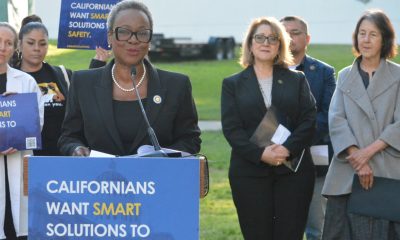

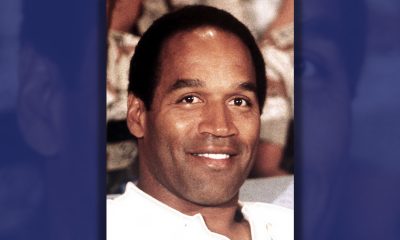





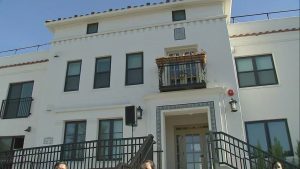
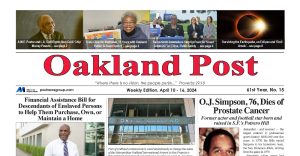

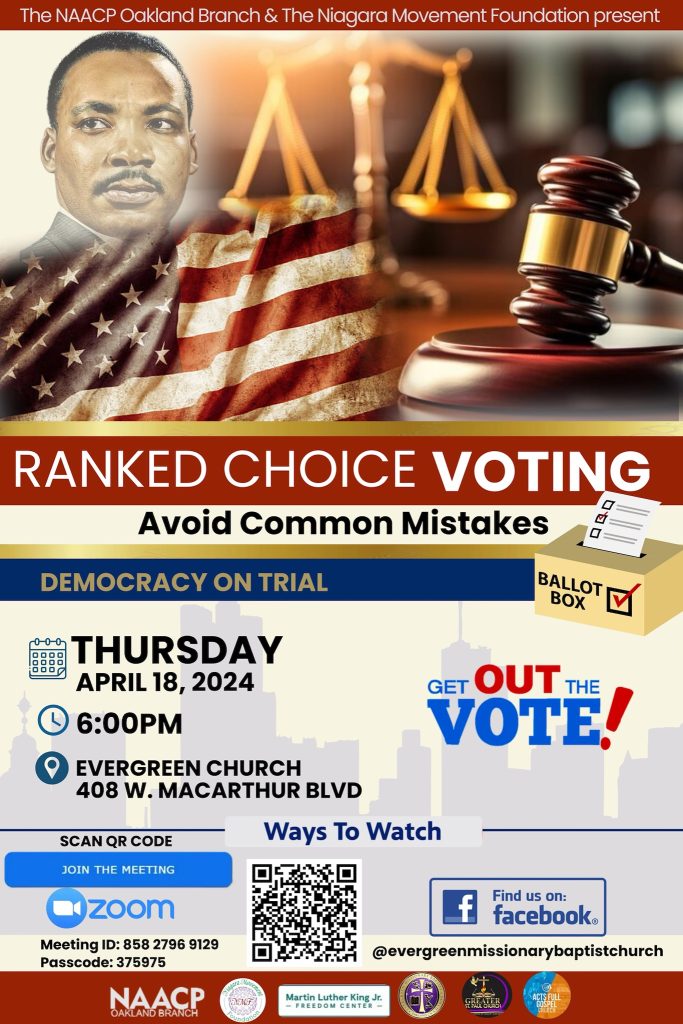
































2 Comments